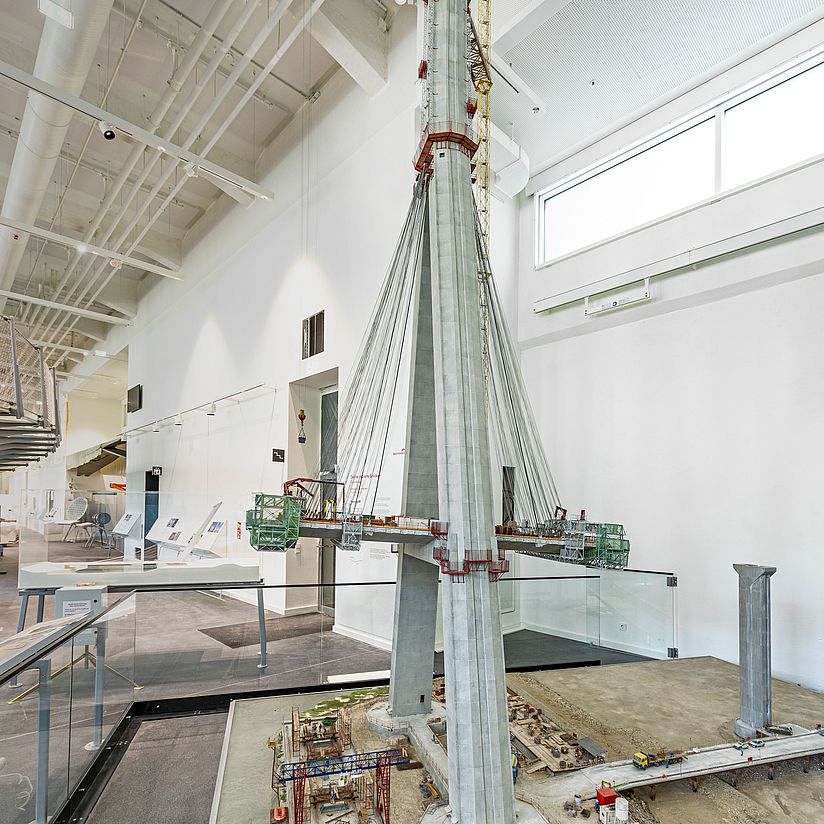
Photo: Deutsches Museum, München | Hubert Czech
Bridges and Hydraulic Engineering
Here it is under and over
Building is a science in itself. Experts are needed for the complex process from design to construction and execution. Within civil engineering, bridge construction is considered the supreme discipline. This is due to the often gigantic dimensions of the structures, which are also frequently innovative prototypes or one-offs and leave their mark on entire landscapes. Hydraulic engineering is no less exciting and presents engineers with its own unique challenges. The Bridges and Hydraulic Engineering exhibition is as multifaceted as civil engineering itself: solid and flowing, rock-hard and dynamic.
Here it's under and over! Not only thematically, but also spatially: The exhibition leads through the areas of tunnel construction, hydraulic engineering and bridge construction on different levels. Another section serves as a special exhibition area for changing focal points: Initially, the focus here is on concrete. The big arch is spanned by a bridge made of glass, which swings through the room as a walkable suspension bridge. On, under, in front of, behind and next to it, visitors to the Bridges and Hydraulic Engineering exhibition can experience how findings from the natural sciences are put into practice in civil engineering.
The proven concept of the 1998 Bridges and Hydraulic Engineering exhibition has been retained, with a number of new exhibits further broadening the spectrum of bridge engineering presented. In the process, the well-known and popular large-scale models, dioramas and demonstration experiments are presented in a completely revised form with regard to texting, graphic design and supplementary media stations.
“Bridges fascinate young and old - and we have them all! At least in the model: from the 2000-year-old aqueduct of the Romans, to the largest cable-stayed bridge in Europe, the most beautiful truss arches from the pioneering days of the railroad and the banal highway bridge that is built thousands of times over. We show how bridges are built and why they remain standing, i.e. why they are stable,” says Moritz Heber, the curator of the exhibition.
Facts and figures:
Location: Level 0
Exhibition area: 1200 sqm
Demonstrations and interactives: 15
Models and dioramas: 55
Media stations: 12
Highlight: The Glass Bridge
The bridge, built in 1997/1998 to the design of the famous civil engineer Jörg Schlaich, has a span of 27 meters and weighs almost 15 tons. The supports are anchored directly in the bed of the Isar River with piles between nine and 14 meters long through all the basement levels. This structure is the world's only walkable suspension bridge inside a building and (beseides the Foucault Pendulum) the largest and definitely heaviest demonstration in the Deutsches Museum.
Download the Press Release
PM_Bridges_and_HydraulicEngineering.pdf (PDF 4 MB)
